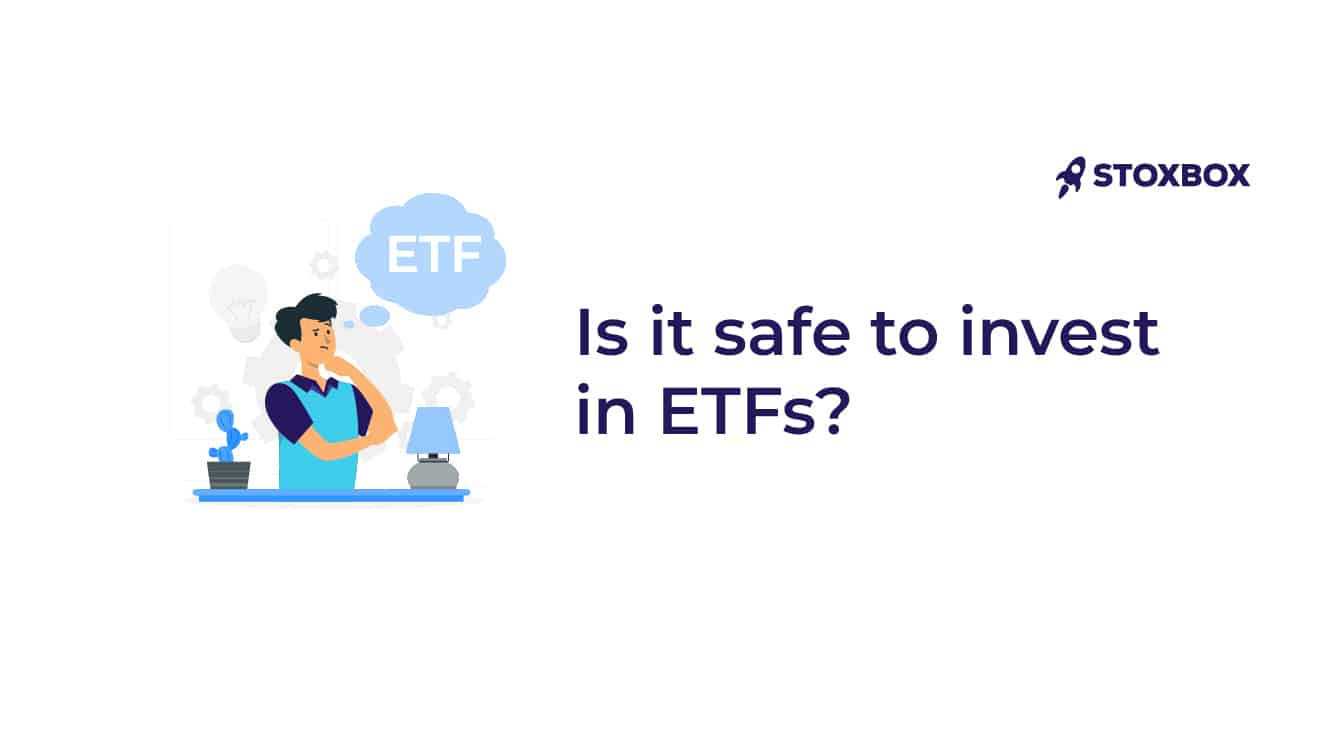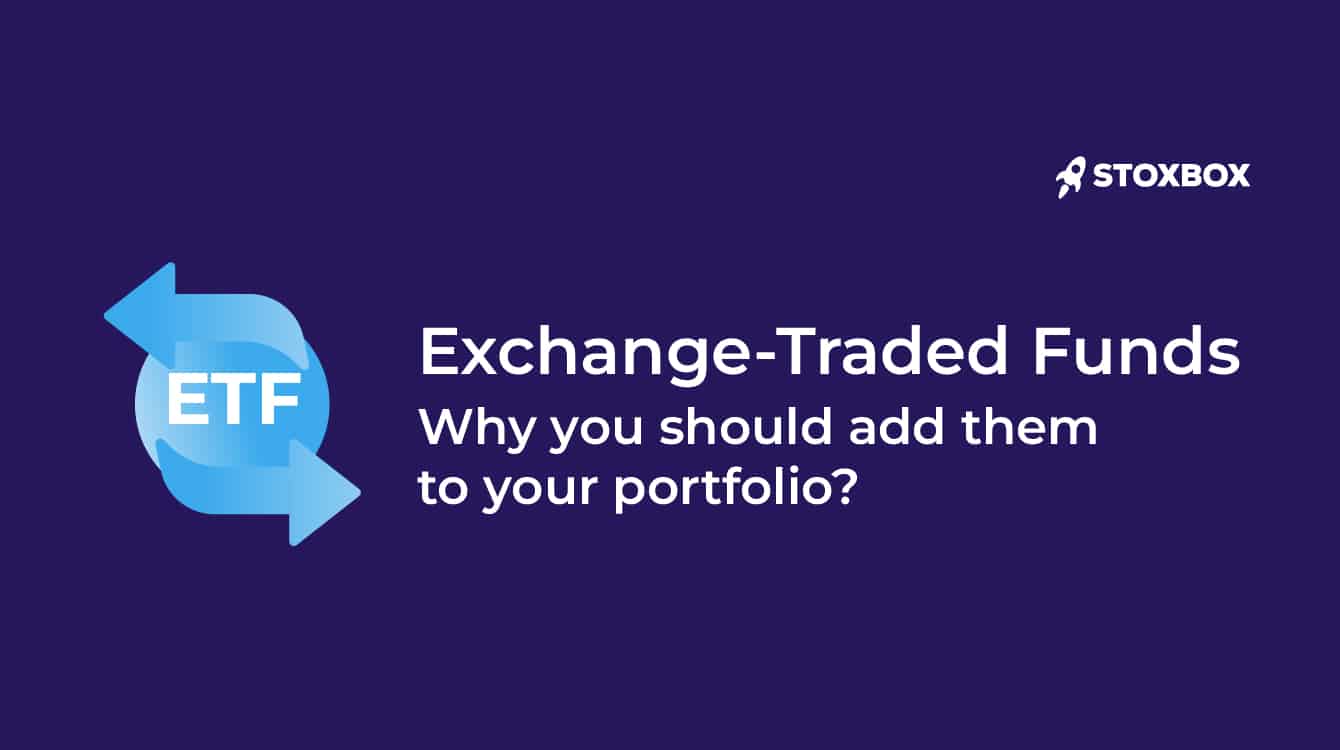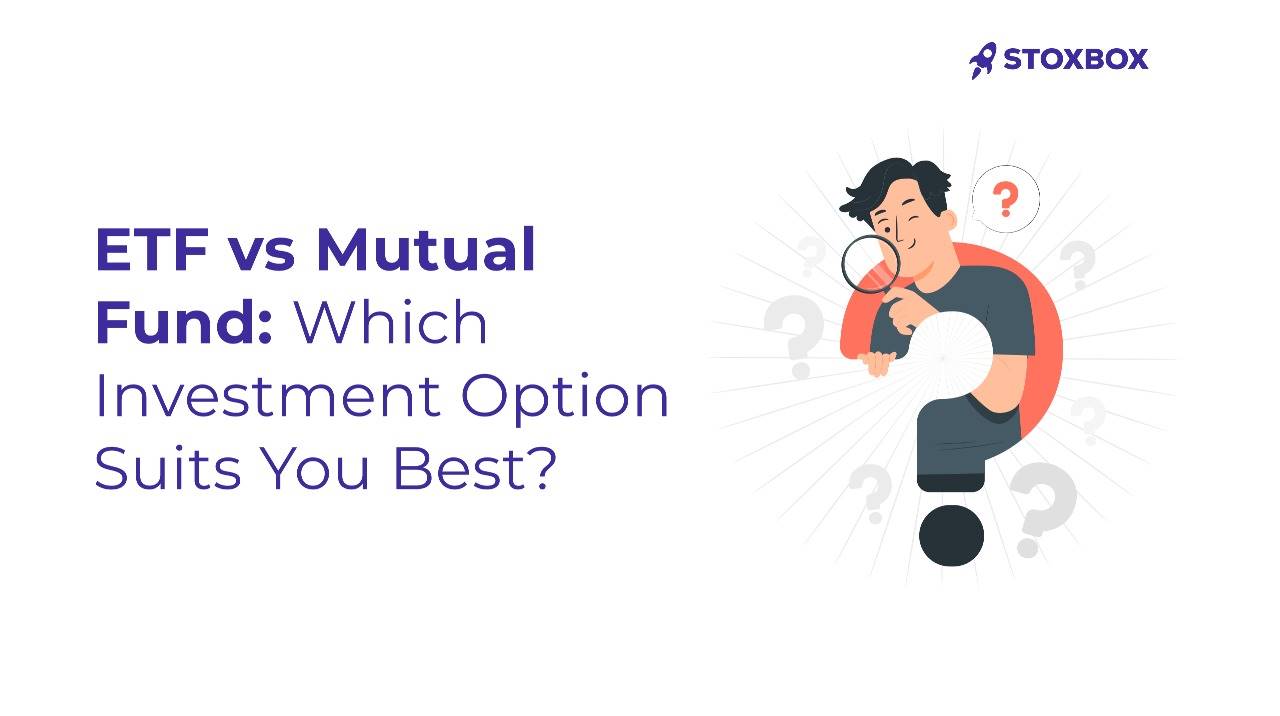Understand the concept of ETF and how it is benefical
Table of Contents
Exchange-Traded Funds, or ETFs, have changed the way people invest – offering a mix of flexibility, low cost, and instant diversification. Whether you’re just starting out or already experienced, ETFs give you the chance to invest across sectors, indices, or even commodities with just one share.
Unlike mutual funds, ETFs trade on the stock market throughout the day – just like individual stocks. This means you can buy or sell them anytime the market’s open, which adds liquidity and gives more control over your investments.
But here’s the real question – how safe are they?
The truth is: ETFs are generally considered safe, but not risk-free. They reduce risk through diversification (because they hold multiple assets), and their structure is transparent – you can see exactly what’s inside the fund. Plus, many ETFs track well-known indices like the S&P 500 or Nifty 50, which adds a layer of stability.
That said, safety depends on what the ETF holds. For example, an ETF focused on government bonds is typically less risky than one investing in emerging market tech stocks.
At platforms like StoxBox, investors can explore different ways to access equity markets- whether through direct stocks, mutual funds, or ETF-based baskets tailored to risk profiles.
In this blog, we’ll walk you through what makes ETFs a safer investment option for many, but we’ll also break down the key risks you should know before investing.
What Is an ETF and How Does It Work?
An ETF – short for Exchange-Traded Fund, is like a ready-made basket of investments (stocks, bonds, commodities, or a mix) that you can buy or sell on the stock exchange, just like a regular stock.
But here’s the catch – it doesn’t just hold one company’s shares. Instead, it holds multiple assets in one place, giving you instant diversification in a single trade.
Let’s simplify it with an example:
If you invest in a Nifty50 ETF, you’re essentially buying into all the 50 companies that make up the Nifty50 index. The ETF fund manager doesn’t try to beat the market – they simply replicate the index by holding each stock in the same proportion as the index. If the Nifty50 changes (say a company is added or removed), the ETF adjusts accordingly.
So as long as the index stays the same, the ETF stays the same. This is known as passive investing, and it’s a big reason why ETF fees are usually lower than those of actively managed mutual funds.
Now, ETFs aren’t just limited to stock market indices like the Nifty or the S&P 500. They can also track:
- Sectors (like IT or pharma),
- Commodities (like gold or oil),
- Bonds, or even investment strategies curated by fund houses.
And because ETFs are listed on stock exchanges, you can trade them during market hours using a demat account—just like company shares. This makes them far more liquid and accessible compared to traditional mutual funds, which can only be bought or redeemed once a day at a fixed NAV. If you’re weighing the pros and cons, understanding the ETF vs Mutual Fund difference can help you decide what suits your investing style better.
Types of ETFs You Should Know Before Investing
ETFs come in many flavors – not just by what they invest in, but also by how they invest. Whether you’re looking for simple stock market exposure or a more tactical strategy, there’s likely an ETF that fits your style.
1. By Asset Class
This is the most basic way to categorize ETFs—based on what they hold.
Equity ETFs
These invest in a group of company stocks. Most track popular indices like the Nifty 50, Sensex, S&P 500, or NASDAQ 100.
You’ll also find variants focusing on:
- Market caps (large-cap, mid-cap, small-cap)
- Dividend-paying stocks
- Growth vs. value strategies
Bond (Fixed Income) ETFs
These invest in bonds, like government securities (G-Secs), corporate debt, or municipal bonds. Great for earning regular income and reducing equity-related risk.
Commodity ETFs
These track the price of physical commodities like gold, silver, or crude oil. Some hold the physical commodity, others use derivatives.
Currency ETFs
These follow currency movements – either a single currency like USD or a basket.
Investors use them to hedge forex risk or speculate on currency trends.
Real Estate (REIT) ETFs
These invest in REITs, which own or operate income-generating properties. A way to invest in real estate without buying actual property.
Multi-Asset ETFs
These combine multiple asset classes, like stocks, bonds, and even gold, into one ETF. Ideal for investors seeking balance and simplicity.
2. By Investment Strategy or Theme
ETFs also differ based on how they invest or what theme they follow.
Sector ETFs
Focused on specific industries like banking, pharma, IT, energy, etc. Helpful if you want targeted exposure to a sector you believe will grow.
Thematic ETFs
These go beyond sectors to follow investment trends—like clean energy, AI, or space tech. They often cut across multiple industries.
International ETFs
Provide exposure to foreign markets, like US tech, China, or Emerging Markets. Useful for geographic diversification.
Smart Beta / Factor ETFs
These are not just about tracking an index. They’re designed around specific factors that aim to enhance returns or reduce risk, such as:
- Value (undervalued stocks)
- Growth (high-potential companies)
- Momentum
- Low Volatility
- Dividend Yield
- Quality
These are semi-passive and lie between traditional index funds and active funds.
Actively Managed ETFs
Unlike index ETFs, these have a fund manager picking and choosing assets. Their goal is to beat the market, not track it—so fees are usually higher.
Investing in ETFs
Investing in ETFs in India involves a straightforward process, similar to buying stocks. Here’s a simple guide on how to purchase ETFs:
- Open a Demat and Trading Account: Before you can trade ETFs, you need a Demat account to hold your ETF shares and a trading account to execute buy and sell orders. These accounts can be opened with any registered brokerage firm.
- Choose the Right ETF: Select an ETF based on your investment goals, risk tolerance, and the performance of the ETF. Consider factors such as the ETF’s tracking error, expense ratio, and underlying index or assets.
- Research and Analysis: Utilize financial platforms and tools to analyze the historical performance and potential of different ETFs. This will help you make an informed decision.
- Place Your Order: Once you have selected your ETF, log into your trading platform, enter the ETF symbol, and place your buy order. You can choose from market orders, which execute at the current price, or limit orders, which set a specific price at which you’re willing to buy.
- Monitor and Manage Your Investment: After purchasing, keep track of your ETF’s performance and market conditions. Adjust your holdings as needed to align with your investment strategy and market changes.
Advantages of ETFs
Exchange-traded funds (ETFs) offer a multitude of benefits that make them an attractive option for a wide range of investors:
- Diversification: ETFs typically hold a diverse portfolio of assets, which helps spread risk. By investing in an ETF, you gain exposure to a broad array of securities, reducing the impact of any single security’s poor performance.
- Cost-Effectiveness: ETFs generally have lower expense ratios compared to mutual funds. This is due to their passive management style, as most ETFs track a specific index without frequent trading.
- Liquidity: ETFs are traded on stock exchanges just like stocks, meaning they can be bought and sold throughout the trading day. This high liquidity makes it easier for investors to enter or exit positions.
- Transparency: ETFs disclose their holdings daily, providing investors with a clear understanding of where their funds are invested.
- Tax Efficiency: ETFs are more tax-efficient than traditional mutual funds due to their unique structure and how they manage redemptions.
Do ETFs Pay Dividends
Yes, many ETFs do pay dividends.
If an ETF holds dividend-paying stocks or other income-generating assets (like bonds that pay interest), the income received from those underlying assets is typically passed on to the ETF shareholders as distributions. These distributions are similar to dividends you would receive from owning individual stocks, and they are usually paid out monthly, quarterly, semi-annually, or annually, depending on the specific ETF’s policy.
Is It Safe to Invest in ETFs?
Investing in ETFs is generally considered safe compared to individual stocks because of the diversification they offer. However, like all investments, they carry risks:
- Market Risk: The value of an ETF can go down as well as up depending on the performance of the market or the specific sector it tracks.
- Liquidity Risk: While most ETFs are highly liquid, some specialized or smaller ETFs might experience lower trading volumes, which could impact price stability.
- Tracking Error: This occurs when there is a discrepancy between the performance of the ETF and its underlying index. While typically small, significant tracking errors can affect returns.
Investors should consider their own risk tolerance and investment horizon when choosing to invest in ETFs, and it’s often wise to consult a financial advisor.
Conclusion
ETFs represent a flexible and diversified investment option suitable for a variety of investment strategies. From their cost-effectiveness and liquidity to their transparency and potential tax advantages, ETFs offer significant benefits to both novice and experienced investors.
While generally considered safe due to their diversified nature, it’s important to remember that all investments carry some level of risk. By understanding these risks and consulting with financial experts, you can make informed and thoughtful investment decisions that align with your long-term financial objectives.
Frequently Asked Questions
1. What are the main differences between ETFs and mutual funds?
ETFs and mutual funds both offer a way to invest in a portfolio of assets, but ETFs trade on stock exchanges like individual stocks, offering intraday liquidity. Mutual funds are only traded at the end of the trading day based on their net asset value (NAV). ETFs typically have lower expense ratios and greater tax efficiency compared to mutual funds.
2. Can you automate investments in ETFs like a systematic investment plan (SIP)?
Yes, many investment platforms allow investors to automate their ETF investments using a systematic investment plan (SIP). This method enables investors to regularly invest a fixed amount in an ETF, which can help in averaging the purchase cost over time and building a disciplined investment habit.
3. What should investors look for when choosing an ETF?
When selecting an ETF, investors should consider its underlying assets, expense ratio, trading volume, and tracking error. The expense ratio affects the cost of owning the ETF, while the trading volume indicates liquidity. Tracking error shows how closely the ETF follows its benchmark.
4. How do ETFs handle dividend payments from their holdings?
ETFs collect dividends paid by the underlying holdings and distribute these dividends to ETF shareholders, typically quarterly. The exact handling of these dividends can vary by ETF; some may reinvest the dividends automatically, while others distribute the cash directly to shareholders.
5. Are there any specific tax considerations for ETF investors in India?
In India, dividends received from ETFs are added to the investor’s income and taxed according to their income tax slab. Capital gains from ETFs are also subject to tax, which varies depending on the holding period: gains from holdings less than a year are taxed at 15%, while holdings over a year are taxed at 10% if gains exceed ₹1 lakh.
6. What are the risks associated with investing in ETFs?
While ETFs are generally considered lower risk compared to individual stocks, they are not free from risks. Market risk, liquidity risk, and tracking error are some of the common risks associated with ETFs. Market risk involves the overall performance of the financial markets, liquidity risk pertains to the ability to buy or sell the ETF without affecting its price, and tracking error refers to the discrepancy between the performance of the ETF and its underlying index.
You might also Like.
ETF vs Mutual Fund: Which Investment Option Suits You Best?
Understand the difference between ETF Vs Mutual Funds Table of...



